Salinity is one of the biggest problems of water quality in coastal regions.
The sea salinity effect exposure of the Republic of Croatia to the action of the sea bring with them the problem of sea penetration into coastal aquifers, and are a serious threat to agricultural production.
The penetration of sea water has negative ecological consequences on the Neretva Valley, which is one of the areas with the most pronounced impact of sea salt on soil salinity in Croatia. Agriculture of the Neretva region is particularly affected by this problem, where long-term exposure of agricultural properties to saltwater can lead to land unusability.
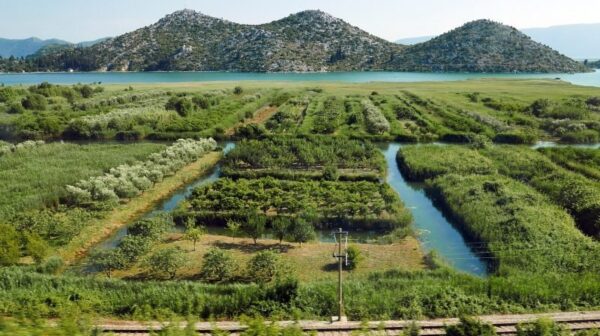
The only way to distinguish if the water is suitable for use in irrigation is to perform testing.
It’s higly recommended that the groundwater and reusable surface water should be tested regularly before being used on crops.
Water salinity can be measured using a pocket-sized salinity meter or by sending samples to a laboratory for analysis. The salinity is measured by reading the electrical conductivity of the water. The higher the salt level, the higher the conductivity. Water salinity measurements are expressed in ‘milisiemens per centimetre’ (mS/cm) or sometimes as ‘microsiemens per centimetre’ (µS/cm).
Conversion. 1 mS/cm = 1,000 µS/cm
To convert mS/m to µS/cm, multiply by 1,000
As a rough approximation, you can convert your salinity readings to parts per million (ppm) as follows:
Result in mS/cm X 640 = Result in ppm
Result µS/cm X 0.64 = Result in ppm
What is the salinity effect on plants?
Salinity of irrigation water affect crop performance in several ways.
• Availibility of water in the rooth zone gets limited due
salts in the root zone outcompete plant roots for moisture, reducing growth and yield.
• Salts also effect the plants shoot growth and yield.
• Chloride in high levels also showed sevelar toxic effects on certain crops
General guidelines to follow regarding the salinity of water used for irrigation:
• if salinity is less than 0.8 mS/cm, the water is suitable for most crops and pastures on moderately to well-drained soils.
• if salinity is more than 2.3 mS/cm, the water is not suitable for continuous use for most crops
Summary of guidelines for water quality for irrigation
OK | Be careful | Problematic | |
Conductivity | < 0.8 mS/cm | 0.8 – 2.3 mS/cm | > 2.3 mS/cm |
TDS | < 500 ppm | 500 – 1500 ppm | > 1500 ppm |
Conductivity can be measured using a conductivity tester or a meter.
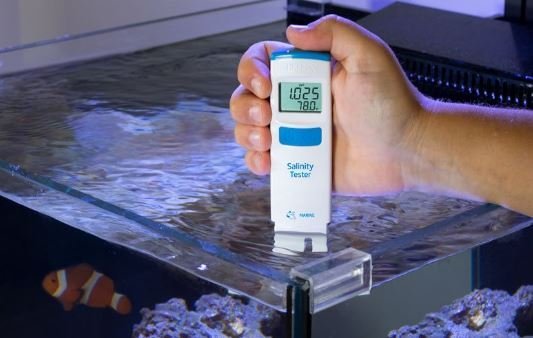
Electrical conductivity measurements can be used to determine salinity in different waters. It means that an electrical conductivity measurement can only be used to accurately determine the salinity of samples such as seawater.
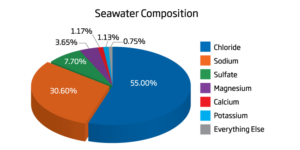
Monitoring of sodium adsorption ratio (SAR) in groundwater
NaCl(s) –> (H2O) Na+(aq) + Cl-(aq)
Excessive concentrations of sodium and chloride ions in irrigation water can cause toxicities in plants. These ions can be taken up either by the roots or by direct contact on the leaves. More damage is caused by direct absorption through the leaves.
Typical sodium toxicity symptoms that plants can show are burned or schrched leaves and dead tissue along the outside edges of leaves. High concentrations of sodium in irrigation water can induce calcium and potassium deficiency in soils low in these nutrients, and crops may respond to fertilisation with these nutrients. Another effect of sodium is that if sodium physicochemical effects on soil structure limiting water and air and water infilitration in the soil.
The SAR measures the relative percentage of sodium ions in water to calcium and magnesium ions. A high SAR indicates there is potential for sodium to accumulate in the soil.
Example:
SAR | Type | Reaction |
2–8 | citrus, deciduous fruits and nuts | Very sensitive |
8–18 | Beans | Sensitive |
18–46 | Clover, oats, rice | Moderately tolerant |
46–102 | beets, lucerne, tomatoes, wheat | Tolerant |
Phytotoxicity and effects of chloride concentration in groundwater
Water quality analysis includes also the determination of chloride ions, which can be toxic to plants in high concentrations.
Saline water can include sodium in several types of salts (NaCl), potassium (KCl) and calcium (CaCl2) salts.
In Croatia, aquifers prone to seawater intrusion are characterized by high chloride concentrations.
The levels of chloride in non-contaminated waters are frequently lower than 10 mg/L and sometimes lower than 1 mg/L. Chlorides in fact are considered important in the nutritional balance of plants, in lower levels. They can also be usefull in the control of root and foliar diseases in some crops and benefit vegetal nutrition.
However, excessive chloride accumulation damages the leaves of fruit trees, such as olives, walnut and citrus trees. Leaves can show burn damage due to chlorine accumulation depending on the type of trees.
The degree of ion chloride restriction (Cl-) in irrigation water:
< 140mg/L is considered light,
140 -350 mg/L is moderate,
> 350 mg/L are considered severe.
Crop type | Chloride concentration in irrigation water |
Citrus rootstocks | |
trifoliata | 120 |
lemon | 200 |
sweet orange | 300 |
lime, mandarin | 600 |
Stone fruit rootstocks | |
Marianna plum (for budding plums and apricots) | 600 |
Myrobolan plum (for budding plums and apricots) | 370 |
Peach | 235 |
Soft fruit varieties | |
Blackberry | 235 |
Raspberry | 120 |
Strawberry | 120–190 |
Chlorides can easily be determined in several ways:
- Photometric/spectrophotometric
- Titration test kits
- Chloride ISE
- Multiparameter HI9829 with optional Chloride sensor
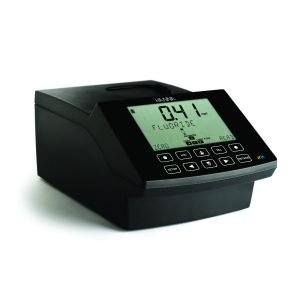

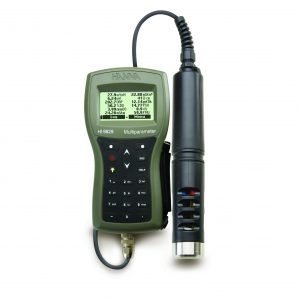
HI931 – Chloride determination – Titration by silver nitrate
The chloride concentrations of the water samples can be precisely determined by silver nitrate using a Hanna titration system HI931
AgNO3 + NaCl → AgCl + NaNO3
The results are expressed as ppm (mg/L) as Chloride.
Titration Method for the determination of chloride in water is the most accurate method for choride determination as referenced to
Standard Methods for the Examination of Water and Wastewater 21st edition, Method




